We're sharing some of the most intriguing rain facts, from where it rains sulfuric acid to why some rain never hits the ground
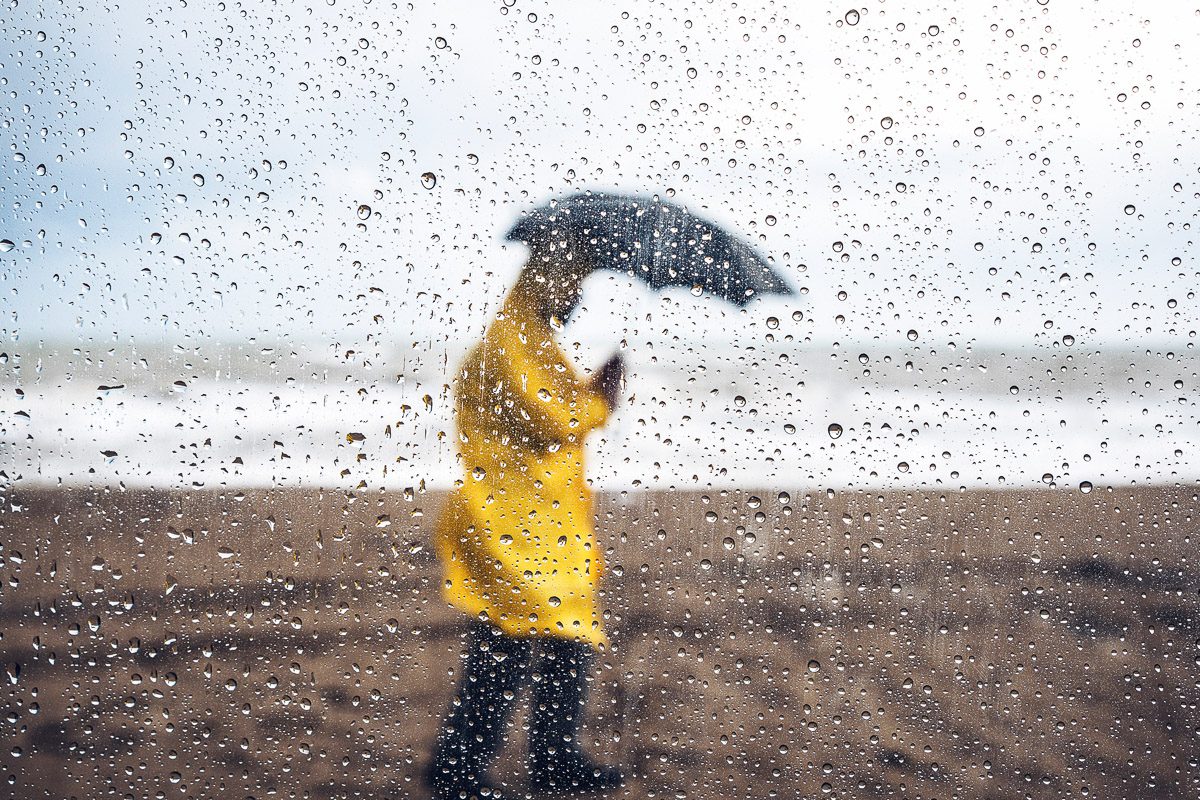
10 Rain Facts You Probably Missed in School

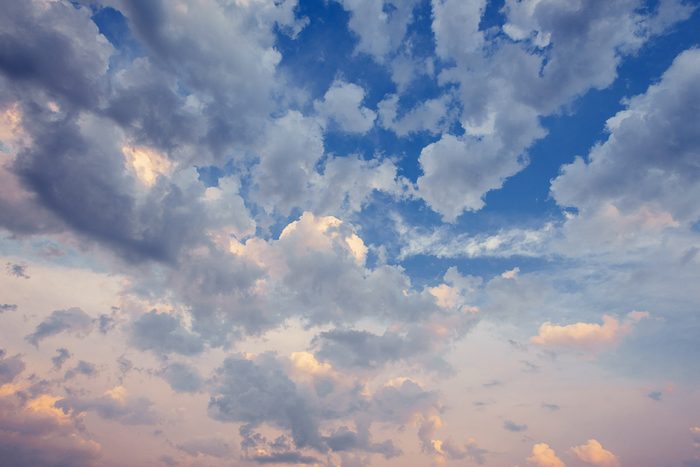
The clouds can help you predict rain
This is one of the coolest rain facts: The shape and size of clouds can help predict the weather. Generally speaking, if you spot a cumulonimbus cloud (a tall, puffy cloud that looks flat at the top and is shaped like an anvil) or a nimbostratus cloud (a flat low-level gray cloud with a somewhat ragged base), you can be fairly certain that rain is in the 24-hour forecast. These clouds, which float between 1,100 to 6,500 feet and 2,000 to 10,000 feet respectively, are full of moisture content—comprising water droplets and some ice crystals at the top ends, where temperature is the lowest.
On the other hand, if you were to notice a bright white, wispy type of cloud that looks like tufts of hair, tuck your rain boots away because you’re looking at a Cirrus cloud. These sit quite high in the sky, at about 20,000 to 40,000 feet, and are made entirely of ice crystals (due to the cold temperature where they hang) and do not indicate precipitation. Although highly unlikely, if these ever do rain, they do not make the ground wet.
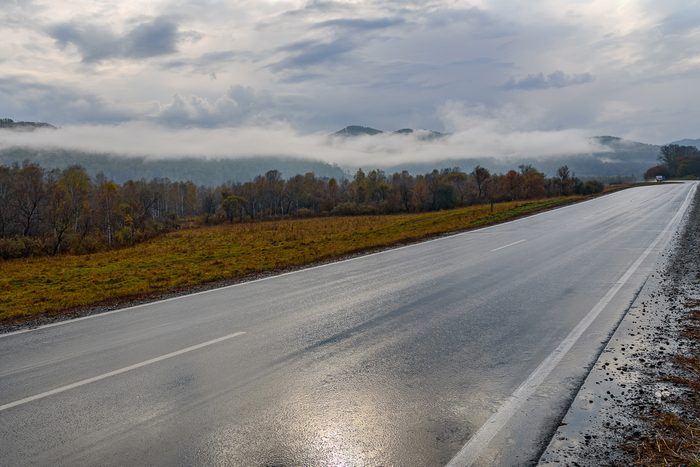
Rain doesn’t always fall on the ground
Has it ever happened that your weather app shows rain but when you look outside the window, there’s … nothing? In dry or very hot places (such as the Sahara Dessert and the Atacama Dessert), rain sometimes evaporates before it hits the ground—an environmental phenomenon that the American Meteorological Society defines as virga.
While rare, virga can also occur in high altitudes with low air pressure and dry air. In regions where this type of precipitation, also known as “phantom rain,” is more frequent, the vegetation adapts to be xerophytic—designed to survive with minimal rain. However, depending on the air pressure and humidity levels, you may just notice it in cities too.

It’s been raining for a long, long time
We all know that about 75% of the earth is covered with water, and this same water has been recirculating through the planet for billions of years via the water cycle. But have you ever wondered when the first rain fell on the earth? Scientists from Australia’s Curtin University uncovered that rains date back as far as 3.8 to 4 billion years ago.
This interesting rain fact was brought to light in 2024 when an ancient tiny zircon crystal was found. According to the study published in the journal Nature Geoscience, the zircon crystal had “oxygen isotopes,” which are key indicators of hot, fresh water.
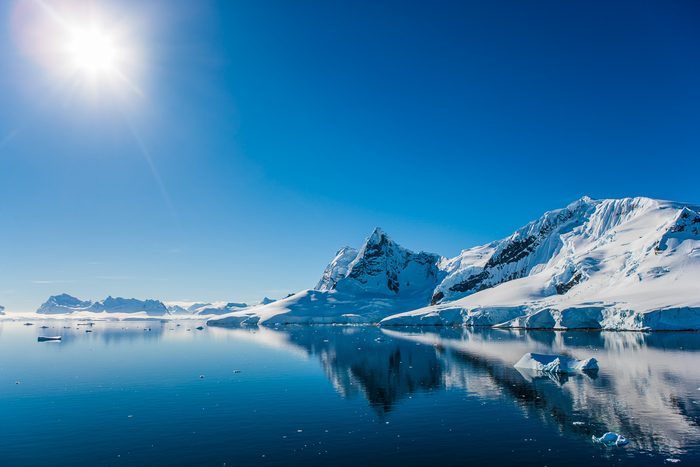
There’s a place that gets even less rain than deserts
Think the hottest place on earth is also the driest? Well, that’s a classic weather myth. On the contrary, assuming the coldest place receives the most rainfall is wrong too. According to the United States Antarctic Program, the coldest place on earth—Antarctica—gets only about 2 inches of rain in a year, even though it is mainly covered with ice. Rain patterns around the world shift each year, influenced by the changing atmospheric air pressure and oceanic currents, but when it comes to the extremes, Cherrapunji in India and Arica in Chile top the list, with an annual rainfall average of 1,042 inches and a mere 0.02 inches, respectively.
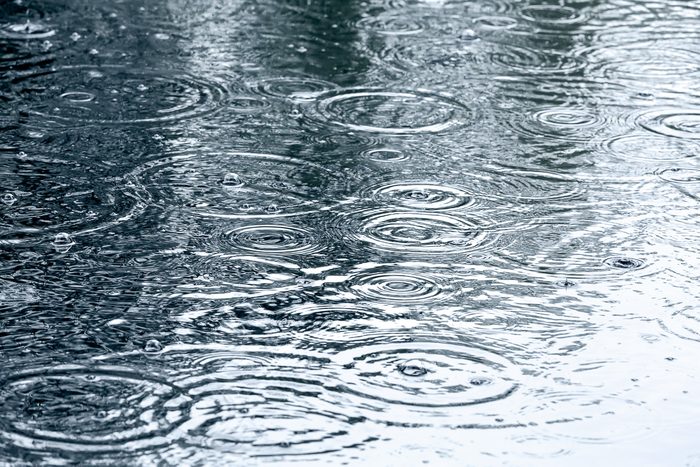
Acid rain is man-made
It may not rain cats and dogs, but it sure does rain acid sometimes. Commonly known as acid rain, this phenomenon occurs when sulfur dioxide and nitrogen dioxide combine with water vapors and fall onto the earth as a cocktail of sulfuric and nitric acids. The presence of this sulfur and nitrogen dioxide in the air is due to human activities such as the burning of fossil fuels and other industrial processes. But earth is not the only planet where rain gets a little … unusual.
A type of acid rain also happens on Venus, but unlike earth, it isn’t caused by pollution. The acid rain on Venus occurs due to natural causes and is made entirely of sulfuric acid, and hence, it is way more corrosive. Another cool space fact is that Saturn’s largest moon, Titan, mimics earth-like precipitation, except the rain is made of liquid methane.

There’s a scientific way to get less wet in the rain
Dash through the rain toward your destination or walk at a normal pace: Which method keeps you drier? What may seem like a silly question to you has actually been studied by scientists. Assuming you don’t have an umbrella on hand and the intensity of the rainfall could vary, the (more) right answer is: run! That’s according to Harvard mathematician David E. Bell, who concluded in his 1976 study that if the rain is falling perpendicularly (with no slant due to the wind), running fast keeps you drier than walking to cover the same distance.
Fast-forward to 2017, when new research published in the Journal of the Washington Academy of Sciences added a new twist to this finding: your height. Even when running, shorter people stay drier. On the other hand, taller runners might get more wet due to their larger exposed surface area, despite running faster. That said, the difference is small enough to be insignificant—but hey, every drop counts, right?
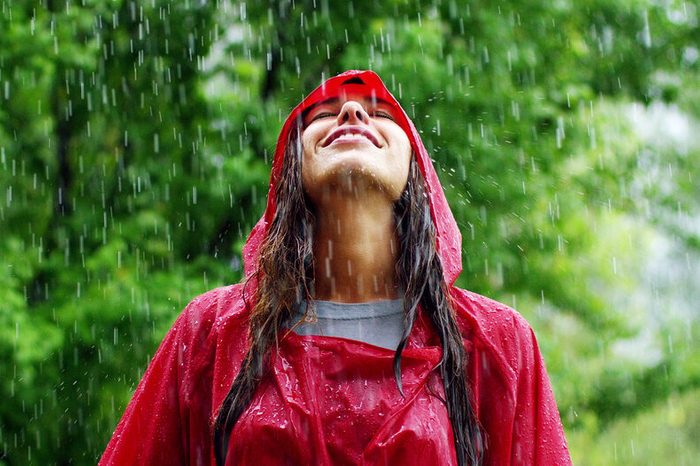
There’s a reason you love the smell of rain
Have you ever wished to bottle the fresh, earthy smell of rain? Well, you’re not alone! But if water itself doesn’t have a smell, why does rain leave behind such a pleasant aroma? The answer lies in the mix of an established science fact and human psychology.
As per the American Chemical Society, the signature earthy scent that fresh rains carry is because of a molecule called geosmin. It is created by soil-dwelling bacteria called actinomycetes. When rain falls, it creates air pockets, which contain small amounts of geosmin and other fragrant plant oils. The rain traps and then releases these air pockets, dispersing geosmin into the air, where our noses can catch it.
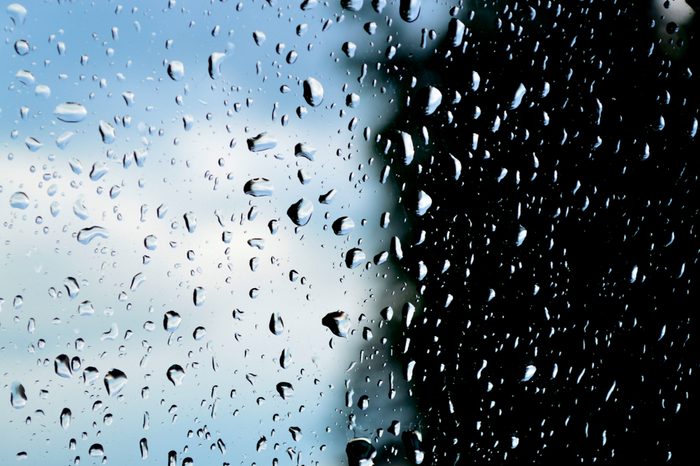
Rain is not actually “drop” shaped
If you’ve ever doodled raindrops in school, there’s a high chance you gave them the classic teardrop shape. However, the “raindrop” designation is actually a misnomer, as scientists have concluded that rain is not actually shaped like a teardrop. In reality, when water molecules condense and bind together in the atmosphere before falling, they form a more or less spherical shape.
According to NASA, as raindrops fall, they encounter air pressure, which flattens the bottom of the drops to take on a shape more like a hamburger bun: round at the top and flat on the bottom. So why the teardrop imagery in cartoons, school textbooks and informal scientific diagrams? From our research, it seems this imagery has just stuck around for centuries due to its simplicity and a general misconception of what raindrops look like.

This U.S. state gets the most rainfall
When it comes to rain facts in the U.S., Hawaii claims the crown as the wettest state in the country. It soaks up an average of 63.7 inches of rain annually—more than double the national average, which is about 30 inches. Right behind Hawaii, Louisiana, Washington and Florida get their fair share of showers, thanks to their coastal locations and weather patterns.
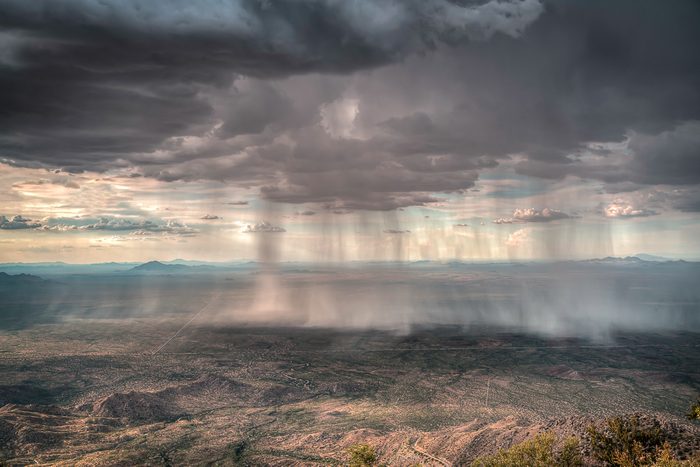
Change in rainfall is a bad omen, according to scientists
Across many religions and cultures, the arrival of rain is cause for celebration—think of the Bun Bang Fai festival in Thailand or the Makahiki festival in Hawaii, both celebrating and honoring the life-giving power of rain. But one, perhaps surprising, rain fact is that when rain falls in an unusual fashion, it is considered a bad omen. And knowing how rain impacts the environment, scientists agree! Untimely showers not only disrupt daily life by displacing the benefits of rainfall but also hint at a much more severe threat to the earth’s climate.
According to Celeste Saulo, secretary general of the World Meteorological Organization, water is the “canary in the coal mine of climate change”—meaning that the erratic rainfall patterns of recent years, which have resulted in frequent droughts, floods and unexpected thunderstorms, not only affect the local areas that experience them but are a red flag for the planet as a whole.
Additional reporting by Meghan Jones.
Why trust us
At Reader’s Digest, we’re committed to producing high-quality content by writers with expertise and experience in their field in consultation with relevant, qualified experts. We rely on reputable primary sources, including government and professional organizations and academic institutions as well as our writers’ personal experiences where appropriate. We verify all facts and data, back them with credible sourcing and revisit them over time to ensure they remain accurate and up to date. Read more about our team, our contributors and our editorial policies.
Sources:
- United States Antarctic Program: “About the Continent”
- Britannica: “Amounts and Variability”
- American Meteorological Society: “Is Virga Rain That Evaporates Before Reaching the Ground?”
- United States Environmental Protection Agency: “What is Acid Rain?”
- Cambridge University Press: “Walk or Run in the Rain?”
- Journal of the Washington Academy of Sciences: “How Wet Do You Get in the Rain, if You Don’t Care How Wet You Get?”
- Met Office U.K.: “Cumulonimbus Clouds”
- National Weather Service: “Cloud Classifications and Characteristics”
- American Chemical Society: “Petrichor—The Smell of Rain”
- Scientific American: “Storm Scents: It’s True, You Can Smell Oncoming Summer Rain”
- N.A.S.A.: “The Anatomy of a Raindrop”
- World Population Review: “Wettest States 2025”
- Associated Press: “The World’s Rivers Faced the Driest Year in Three Decades in 2023, the UN Weather Agency Says”



















